Interview 045 • Jun 3rd 2016
- Interview by: Lou Noble,
- Martin Schoeller Portraits by: Sasha Arutyunova
About Martin Schoeller
Martin Schoeller, the New York based photographer best known for his tight portraits or "Close Up" series, remains at the forefront of the photographic community.
Martin is represented for fine art by Hasted Kraeutler Gallery in New York, Ace Gallery in Los Angeles and Camera Work in Germany. Martin's portraits are exhibited and collected internationally, appearing in solo exhibitions in Europe and U.S., as well as part of the permanent collection of the National Portrait Gallery, Smithsonian Institution, Washington, DC.
Martin's work has appeared in Rolling Stone, GQ, Esquire, Entertainment Weekly, and W, among others. He has also completed major advertising campaigns ranging from pharmaceuticals, cars, and entertainment. Most recent campaigns include: HTC, A&E, Lexus, Mercedes Benz, CNN, and Milk.
Links
Foreword
Before I had a vested interest in anything to do with photography, I very clearly remember standing in front of oversized portraits – jaw agape with a puddle of drool collecting on my shirt collar. The detail. The size. The sheer visual weight just punched you in the gut. Words had left me. I’m of course talking about portraits from Martin Schoeller’s ‘Close Up’ series.
The impact of those images stayed with me through the years. This was somewhere in the mid 2000’s at Art Miami during Basel. If you’ve never been, you walk around gallery after gallery forever and ever, inundated from all sides with everything you could imagine – and then some. I’d never understood the term ‘Visual Fatigue’ until that day. But Martin’s portraits cut through the heap with a grace, grabbing you by the throat, and making sure you took note. Compared to many of the overworked and strained concepts presented there, his portraits rang through with an earnest truth.
And while ‘Close Up’ is inarguably his best known series, the real gems lie a little deeper. The breadth is astounding. Portraits, yes still portraits… but gone are the somber faces. The subject’s personalities, struggles, and candor stand in sheer contrast to the neutral and highly detailed portraits he’s so well known for.
This realization much better describes the man we interviewed. Multifaceted, witty, and honest, Martin was an absolute delight. We can only hope that you are as inspired as we are after reading through this interview.
- Agustin
This interview has been edited for clarity and content.
Interview
With this project…how long do you spend with each subject?
It depends on how chatty people are….so, some people don’t want to share any stories, and if I don’t talk to them, or if they don’t talk to me and we just don’t click then it’s maybe five, maybe seven minutes. But some sit down and start talking and it’s half an hour later.
So, how many people do you try and get through in a day? Is there like a number you wanna hit?
Yesterday I did twenty, which is quite exhausting. I would say between fifteen and twenty is kind of the limit.


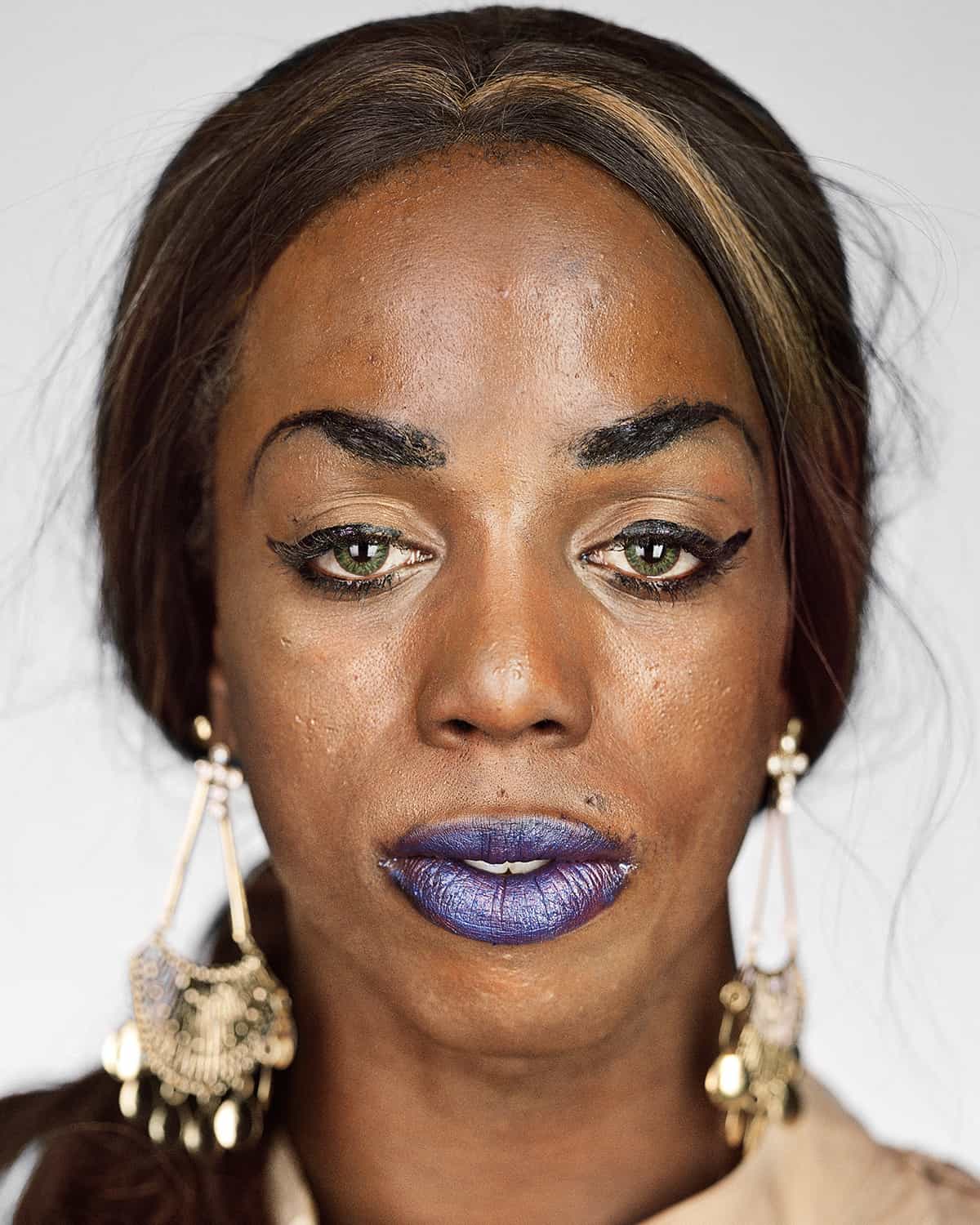





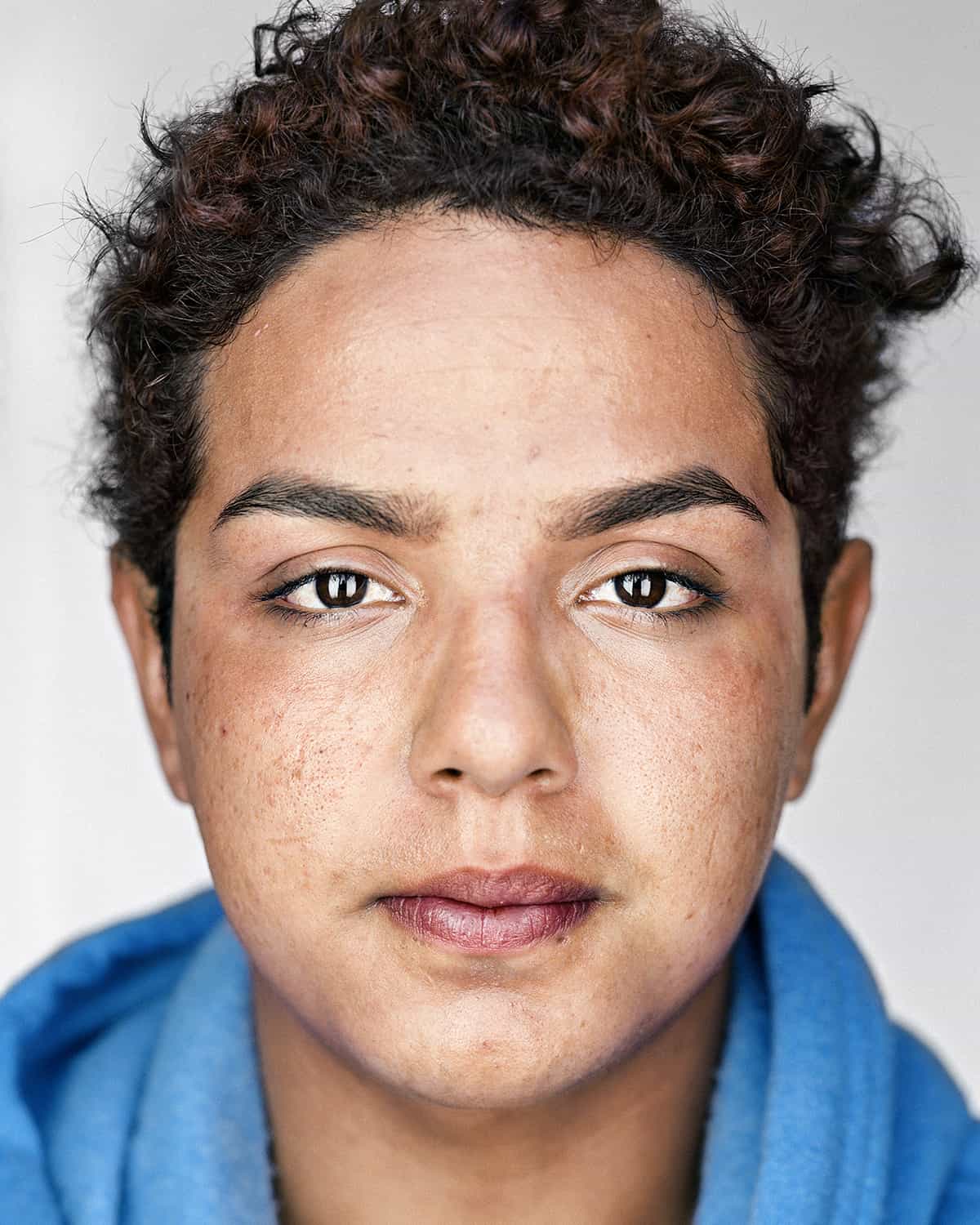

From Sycamore And Romaine – Martin Schoeller
That’s a lot!
Because we can’t start too early. We have to wait for this side of the street to be in the shade, and you can’t go too long because when it gets dark outside, the contrast between the bright lights and the dark night is so big that people are blind and start squinting. It’s kind of a 2pm-6pm time frame.
How long do you want to take with this project?
Well…I think I want to do it for a year. You know, post pictures for a year. I started in November, I believe so…I have a little ways to go. And I post maybe a picture every other day, sometimes every day…yeah we’ll see.
What kinds of things have you discovered while doing this?
I discovered that a lot of people that end up living on the street have mental issues. Or they just hit really tough times and don’t have very much of a fall-back plan. No family to support them, no friends, where they can sleep on someone’s couch, where their favors run out. Just basically having no family support. Oftentimes growing up in foster care, without ever having much guidance as kids to begin with, how to deal with tough situations. But ultimately, you know, so many different reasons why people end up on the street, sometimes it’s because of drug addiction, other times it’s because of depression, other times it’s just because of poverty. So it can be many many different things.
Did you have any preconceptions of what people would be like?
No, I’d worked with homeless people before, I’ve photographed people who were living on the street, and drug addicts, so I kind of had, yeah, a pretty good understanding. I wasn’t aware how much was it was affecting me emotionally, listening to all of these stories, then reading the transcripts, then editing the text. And last year I hit a point where it really brought me down, you know, and I kind of had to snap out of it. It’s good to take a break in between, do two or three days of photography and then come back a couple of months later and do some more. So it’s not part of your everyday life, you know. Because some of those stories are truly heartbreaking and so sad.
Like, what kind of stuff were you feeling when you’d get home from something like that?
It’s partially excitement to see the work come up and be so recognized and affecting so many people. And I get so many compliments from so many people, and the people I photograph like seeing themselves on Instagram. Some of them have a competition, who has the most likes, some of the people I’ve photographed here. And the pictures were used for a report on the homeless situation in Los Angeles and was presented to the city council, and the guy who wrote the report sought me out and asked to use some of my pictures for this report. So now, his proposal was signed off on, which he claims was partially because of my pictures because I put a face to what homelessness looks like for these city officials. You know, everybody has ideas of what a homeless person looks like in the back of their head, but they never really talk to them. They don’t look at each single person closely, so I think most people have preconceived notions about why people end up on the streets. And to broaden that horizon, to show people the many many different reasons why people are out on the streets is kind of the main agenda of this project.

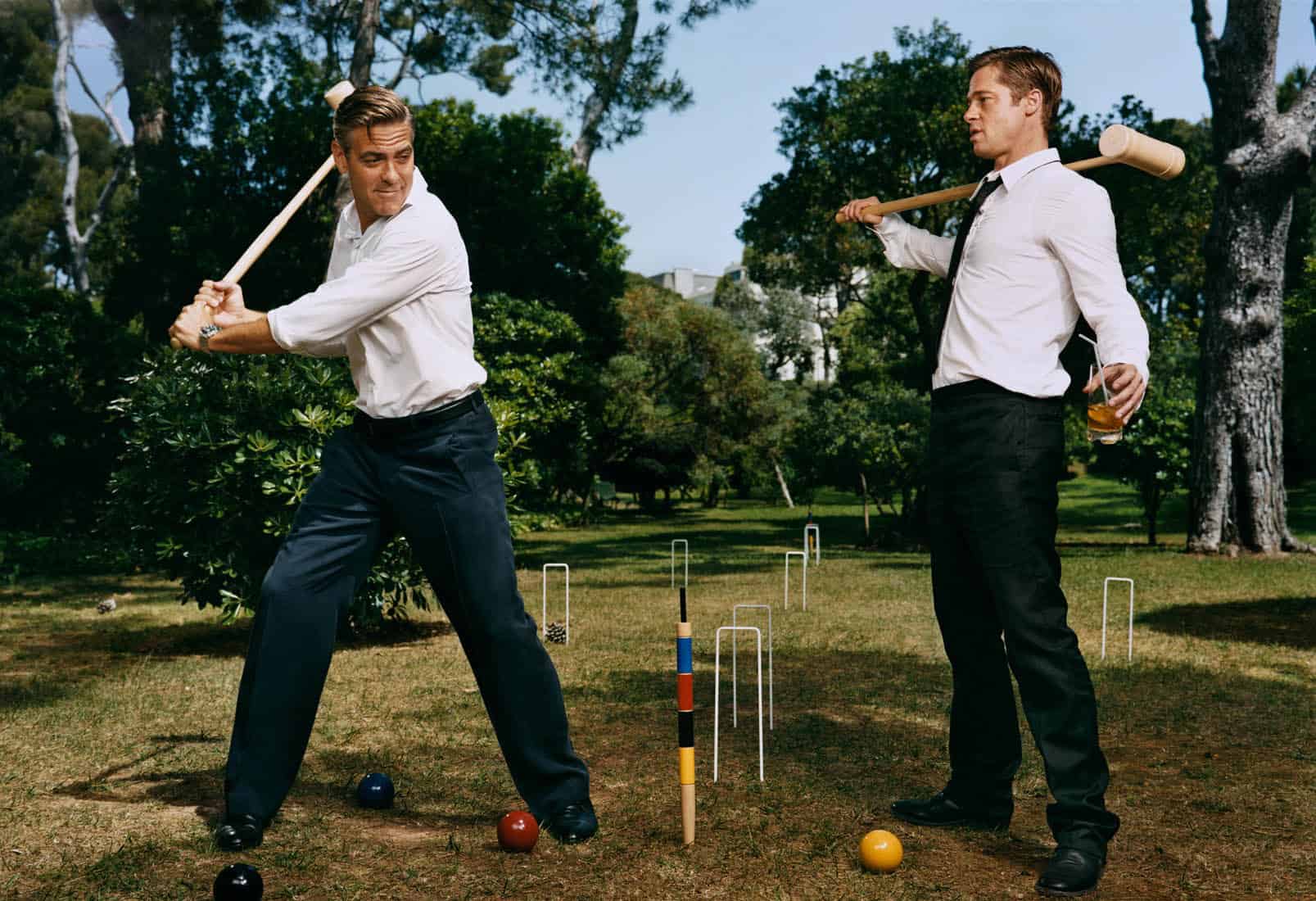

George Clooney & Brad Pitt – Martin Schoeller
Do you find that more gratifying than your commercial work?
It’s good to have a balance in your life. Some jobs pay more money, other jobs are more artistic, you know, so…
Because we’ve talked to conflict photographers as well. And it does have…it does kind of take a toll on you, it does drain…
I could never do conflict photography, I’m way too soft for it.
You know but sometimes, it’s not always just about people at war. Sometimes it is dealing with people after, the aftermath of stuff like that. Like you were saying, it takes its toll. What kind of things do you do to decompress when you get home?
Well you know, I don’t really do anything specific like meditation or anything like that. Just family, just working, doing other jobs, you know, having a balanced life between all these different avenues of life that I do.
Right, and would you consider them easier? In some ways, than kind of doing the same kind of close-ups of a celebrity or…
Yeah, having done these close-ups for so long it becomes kind of routine, and the harder part is that you have to come up with ideas, that you have to talk to people into doing something, which is often times a big part of my work, you know, I have a concept, and I try to talk a famous person into doing it, and talk a magazine into spending money on it, dealing with publicists, and all these different elements. So in that regard, this is much easier, and the hard part is that I’ve done it for so long that I don’t get lazy. And I constantly try to, you know, stay focused. Routine can be difficult to in its own way.

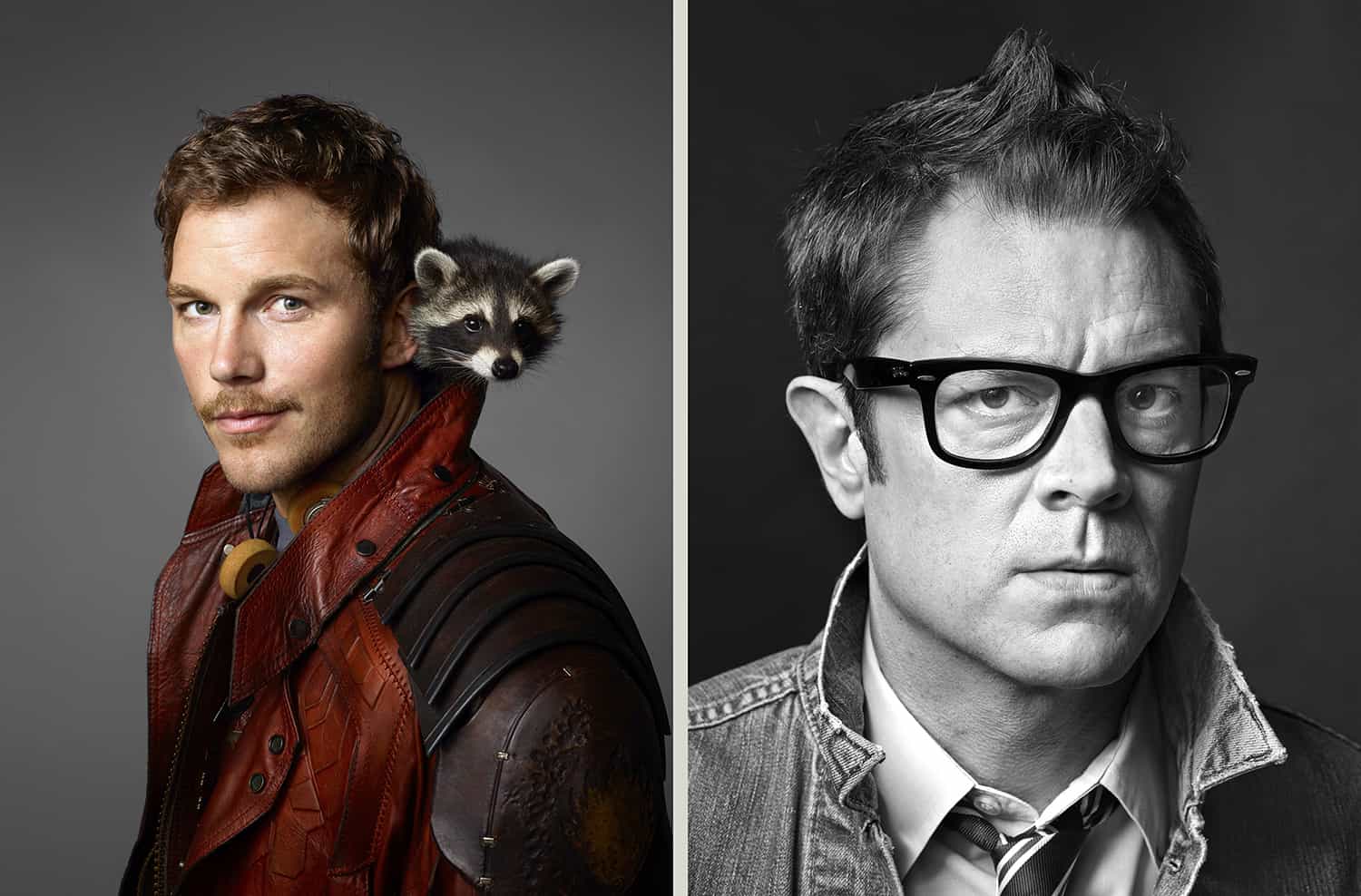

1) Chris Pratt by Martin Schoeller
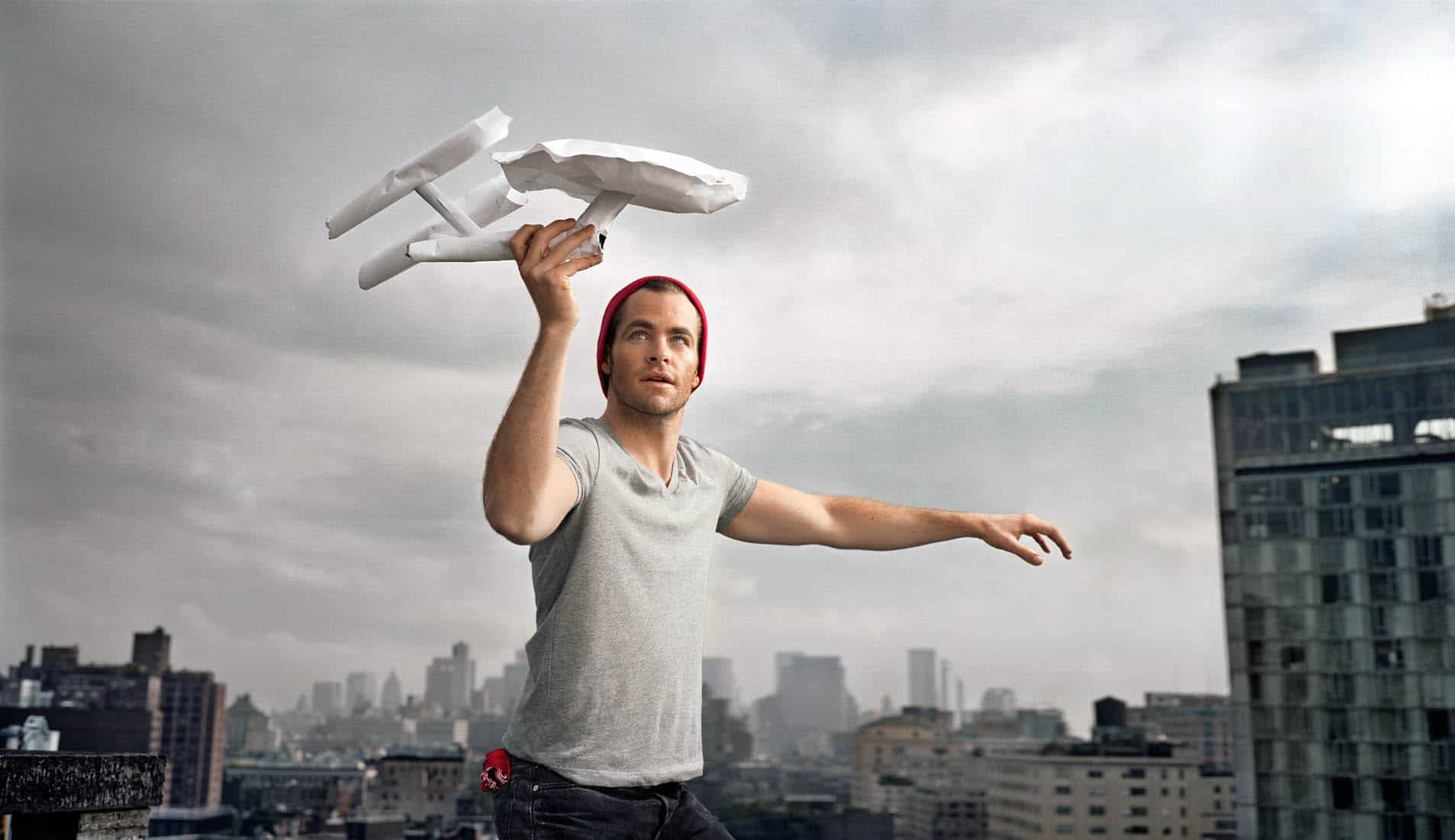

2) Johnny Knoxville
3) Chris Pine
Right, is that where the conversation comes in?
Yes, that’s why I mixed it up this time, and didn’t only take pictures but also combined them with interviews, which I haven’t done in the past, which was kind of a new element. A new approach… (looks down the street) everyone is waiting, everybody is wanting to make that twenty bucks. Some come from far away because they’ve heard about it.
You’re paying them?
Yeah, everybody gets twenty dollars. Well because I feel…they’re sitting down for me. Other people do it to promote a movie, or to promote a record, and they have something to sell, you know. But these people don’t really have anything to sell. They think it’s a good cause and mainly doing it because they trust me, and they trust the coalition. They know ultimately it is to raise funds for the coalition. So that’s why they do it, but I don’t know I think it’s a matter of respect and twenty bucks is a big motivator, makes my life a lot easier to find people.
What was it that convinced you or led you to do this particular project?
This coalition (The Greater West Hollywood Food Coalition) was started by this couple, Ted and Penny Landreth, and they are the parents of a good friend of mine. Audrey, their daughter, has given me some of my first jobs, used to work for Rolling Stone. And she always told me about her parents, that they had this food truck, and they’re feeding homeless people on the street. And I was always intrigued by it. And finally, like ten years later I’m like, “Ok I want to check it out.” And then I thought why not not only check it out, maybe I should photograph some homeless people, so they have some pictures that they can use for whatever purpose they have, to raise funds or….
What was it that kind of clicked for you ten years later, last November, October?
Maybe, yeah, a little bit less work, and being out here on some other job, and I thought, “ahh, I can stay out here another couple of days before I have to run back to New York.” So kind of circumstantial, and I have done other projects involving people on the street, not necessarily living on the street, but I’ve set up my studio often times on the street corner in lower Manhattan, and I’d end up photographing….I ended up in front of a meth clinic…
That was a lot earlier in your career…
That was, yeah, a lot earlier in my career, but I’ve been back to that street corner a couple of times ever since. And I came back to it after I spent one afternoon photographing, and in the beginning I didn’t do interviews. Which I regret, so I have maybe forty portraits, but no stories. Some of them I photograph again now, but with the story. But a friend of mine kept on telling me, “You have to get on Instagram; you have to get on Instagram.” And I always said, “I don’t want to share my personal life. You know, I don’t feel like I’m so important that I need to show people what I’m eating.” And my privileged life to make other people jealous, brag about everything I have. I feel like it doesn’t fit my personality. But then, having these homeless people’s portraits, this need to maybe do something on Instagram knowing that it is important as a photographer, nowadays…led to this all falling into place.

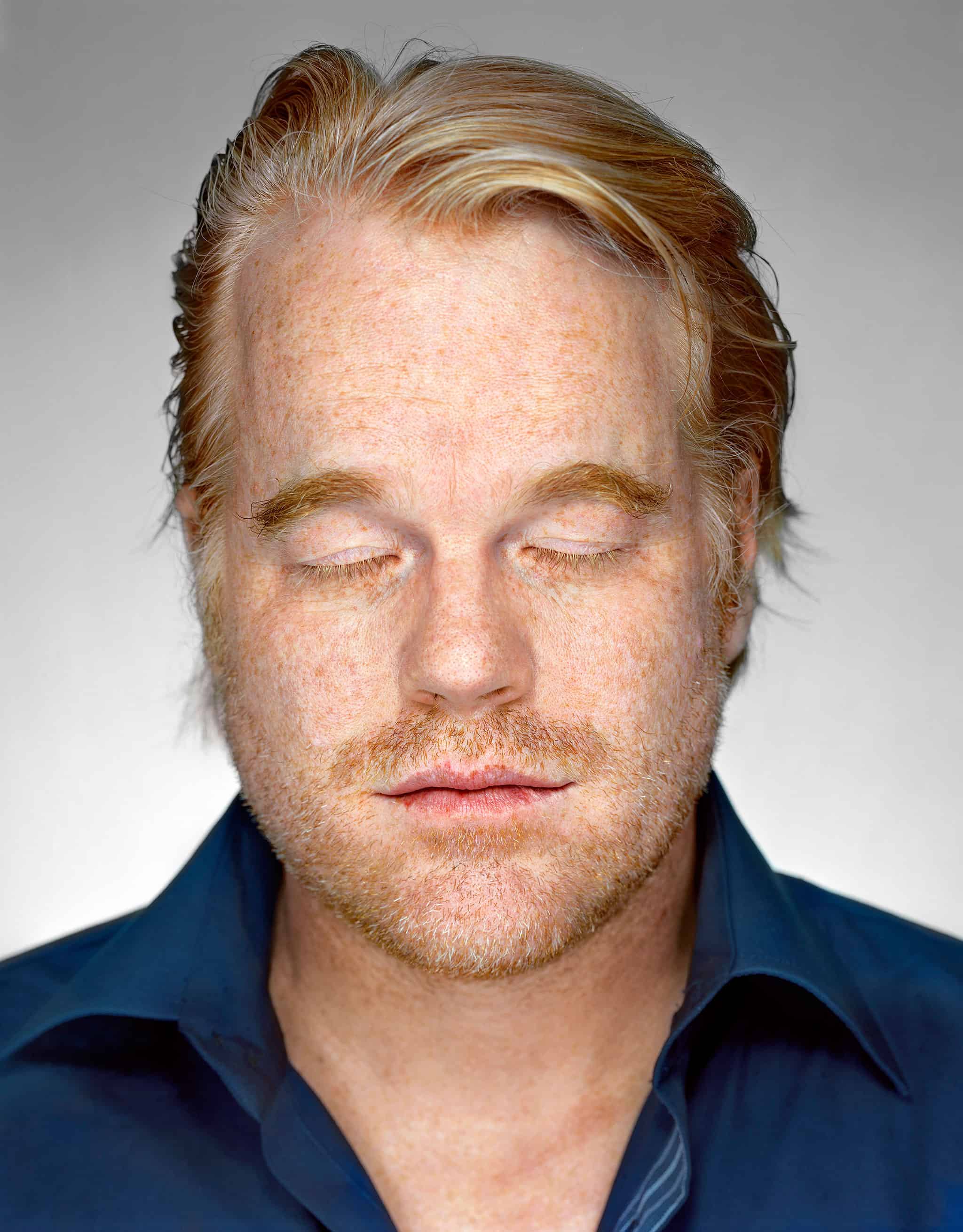


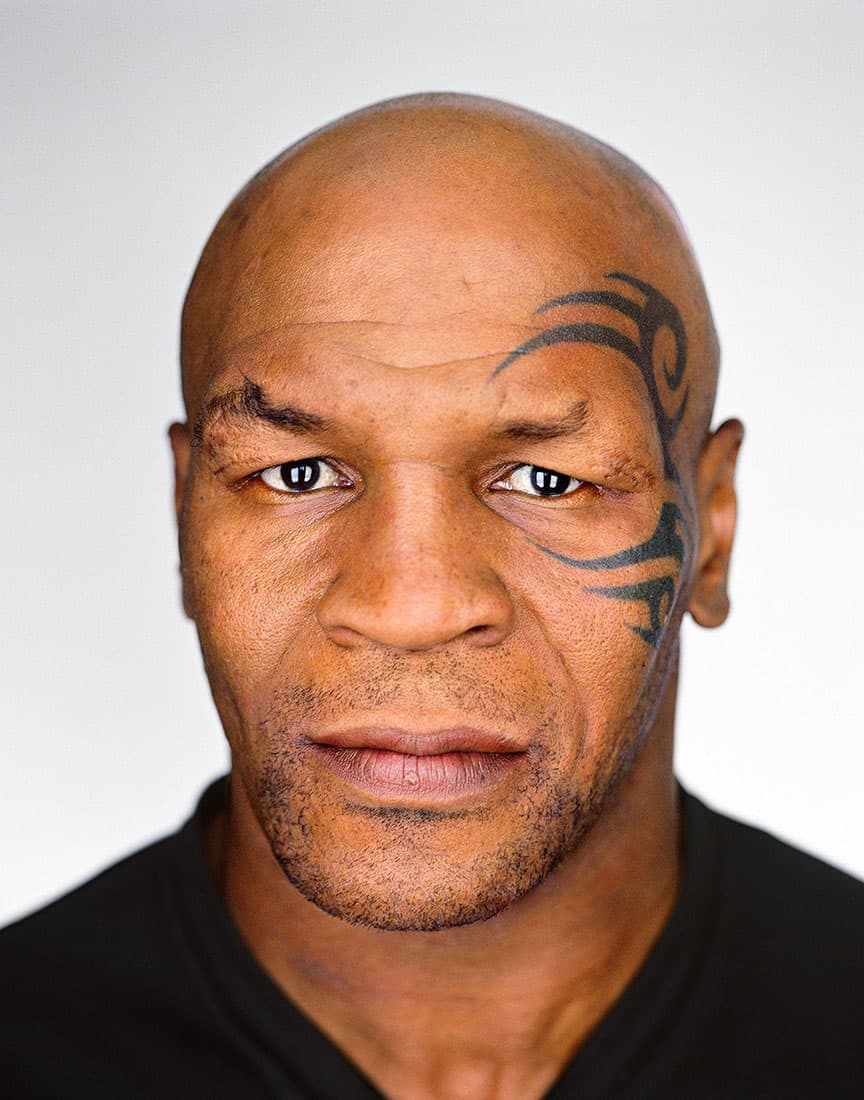


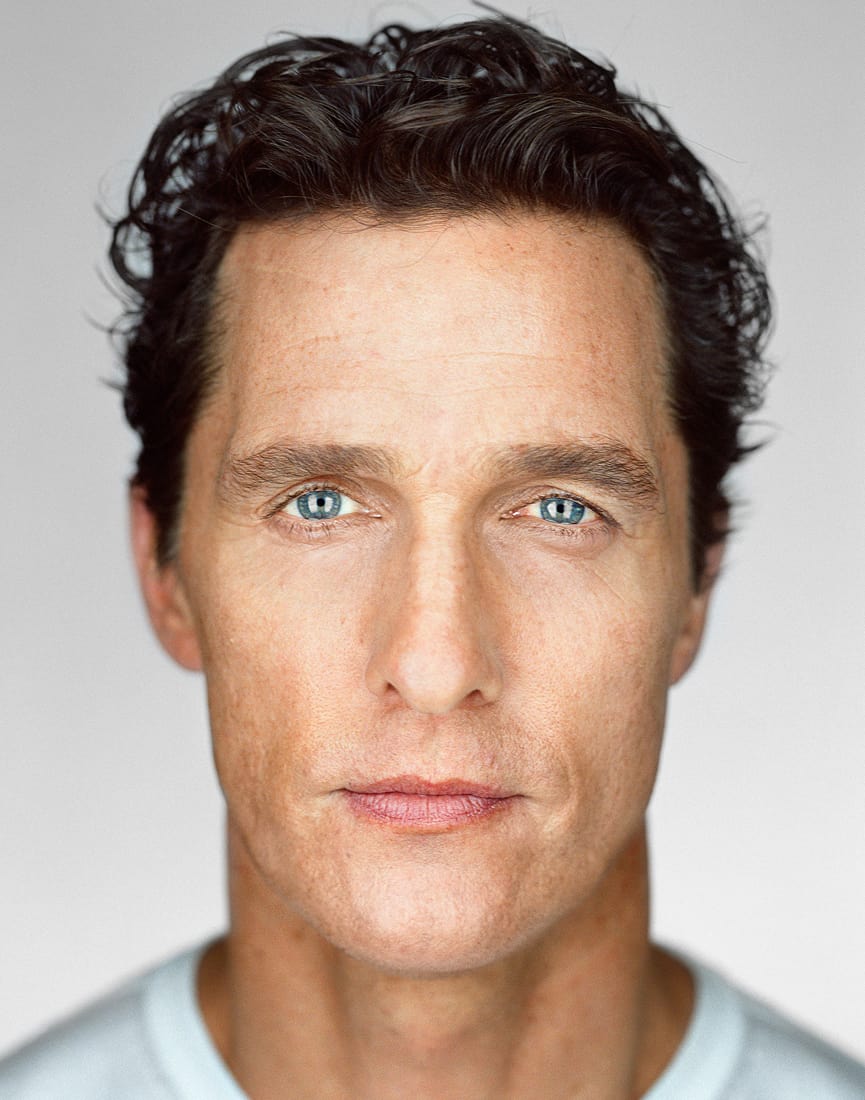


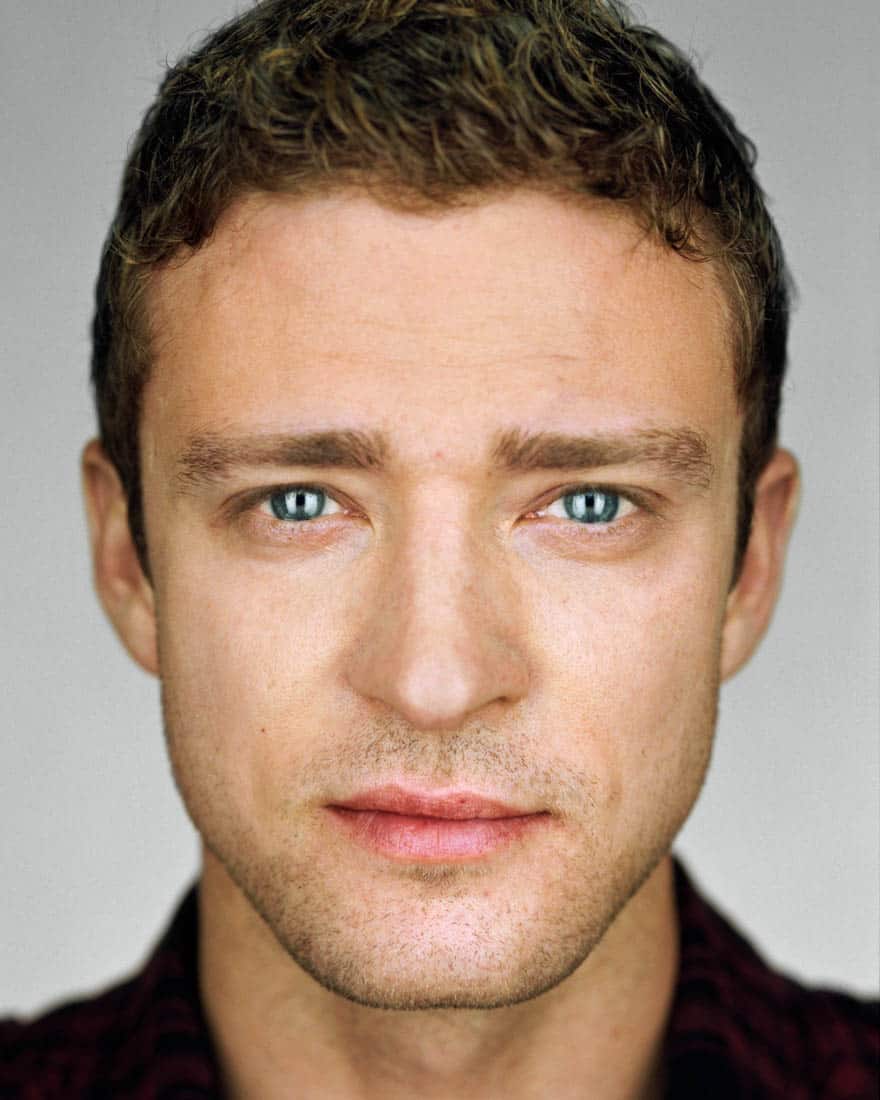

From Close Up – Martin Schoeller
You had mentioned that it’s easy, especially with a close-up approach, to fall into laziness. What do you do to keep yourself creatively sharp?
Well the mixture of work. Having commercial work is oftentimes more production-heavy and organizationally challenging at times, you know, editorial jobs and famous people where I always think to myself, “I have to take the best picture of that person that’s ever been taken.” So it comes with a humongous amount of pressure. And the more artistic endeavors, shows and exhibitions, books, personal, more artistic projects. And then, you know, these fundraising projects. I think the diversity of all of it keeps it interesting. And I still love being a photographer; I think it’s the best job in the world, hahahaha!
Hahahha, I agree! I agree. I was looking…I’ve been familiar with your work for a long time, you know, as long as I’ve been interested in photography. What I didn’t notice until I was actually looking at it as a whole for this interview was how much humor there is in your work. Are you conscious of that?
Oh yeah! 1) Christian Bale by Martin Schoeller

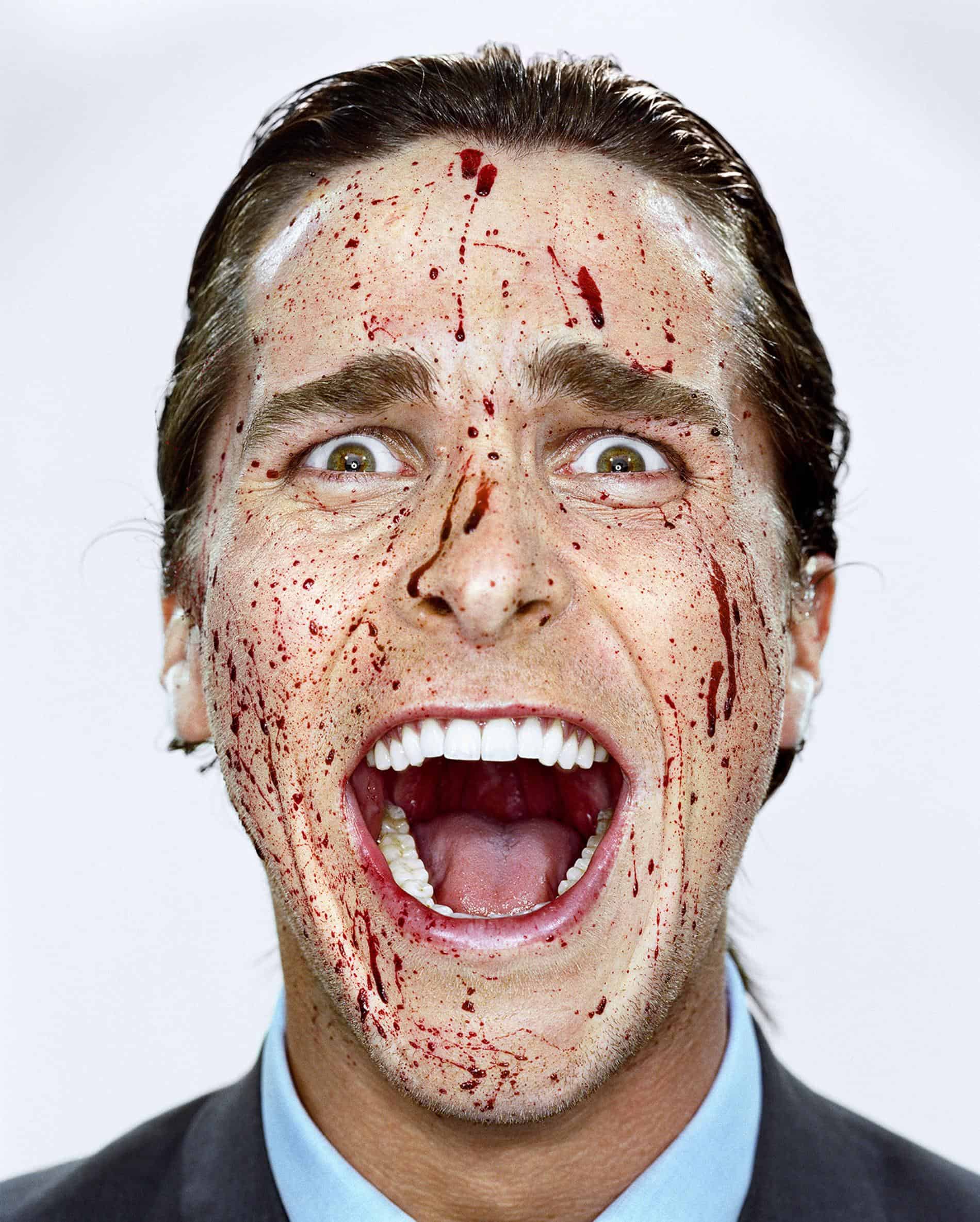


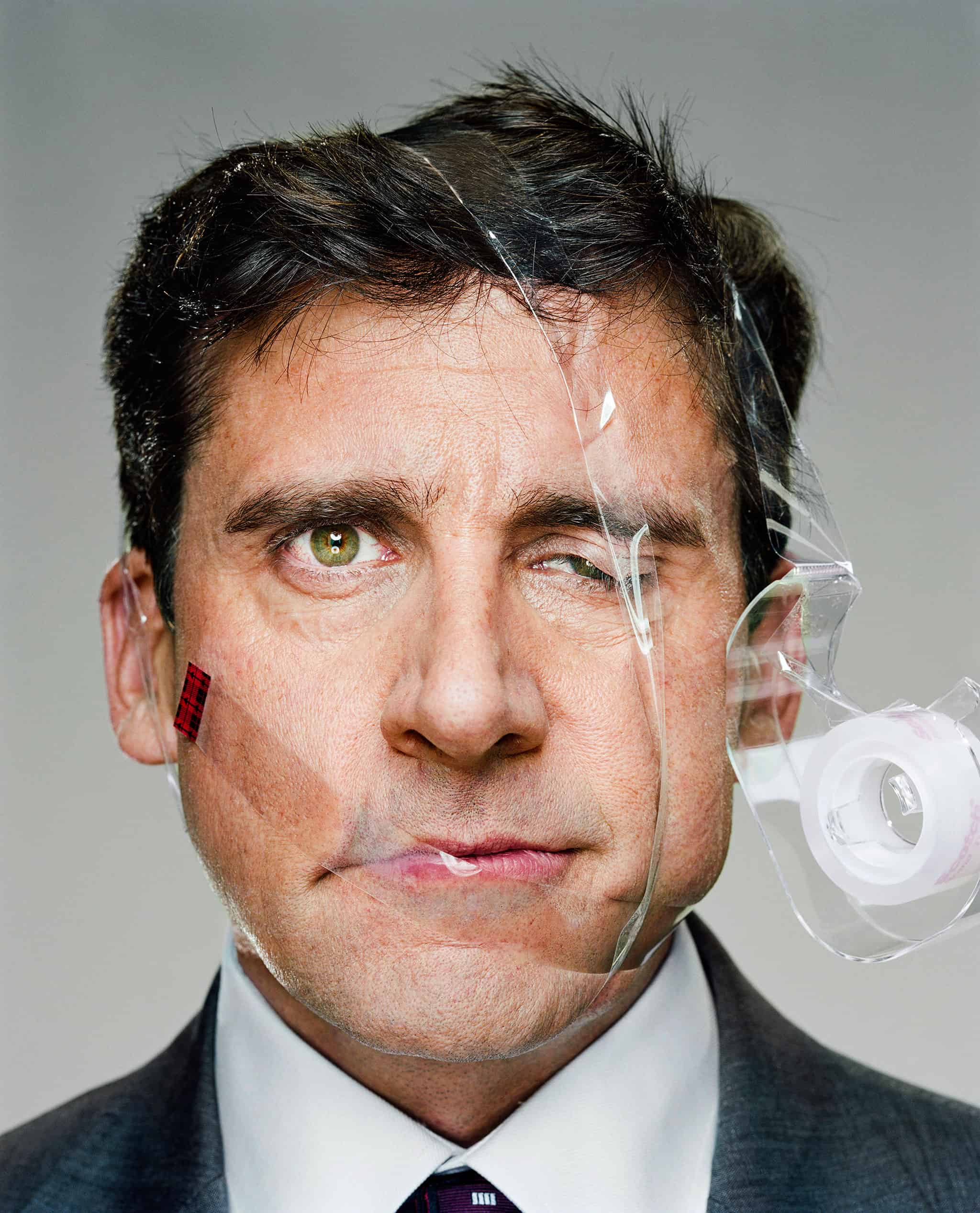


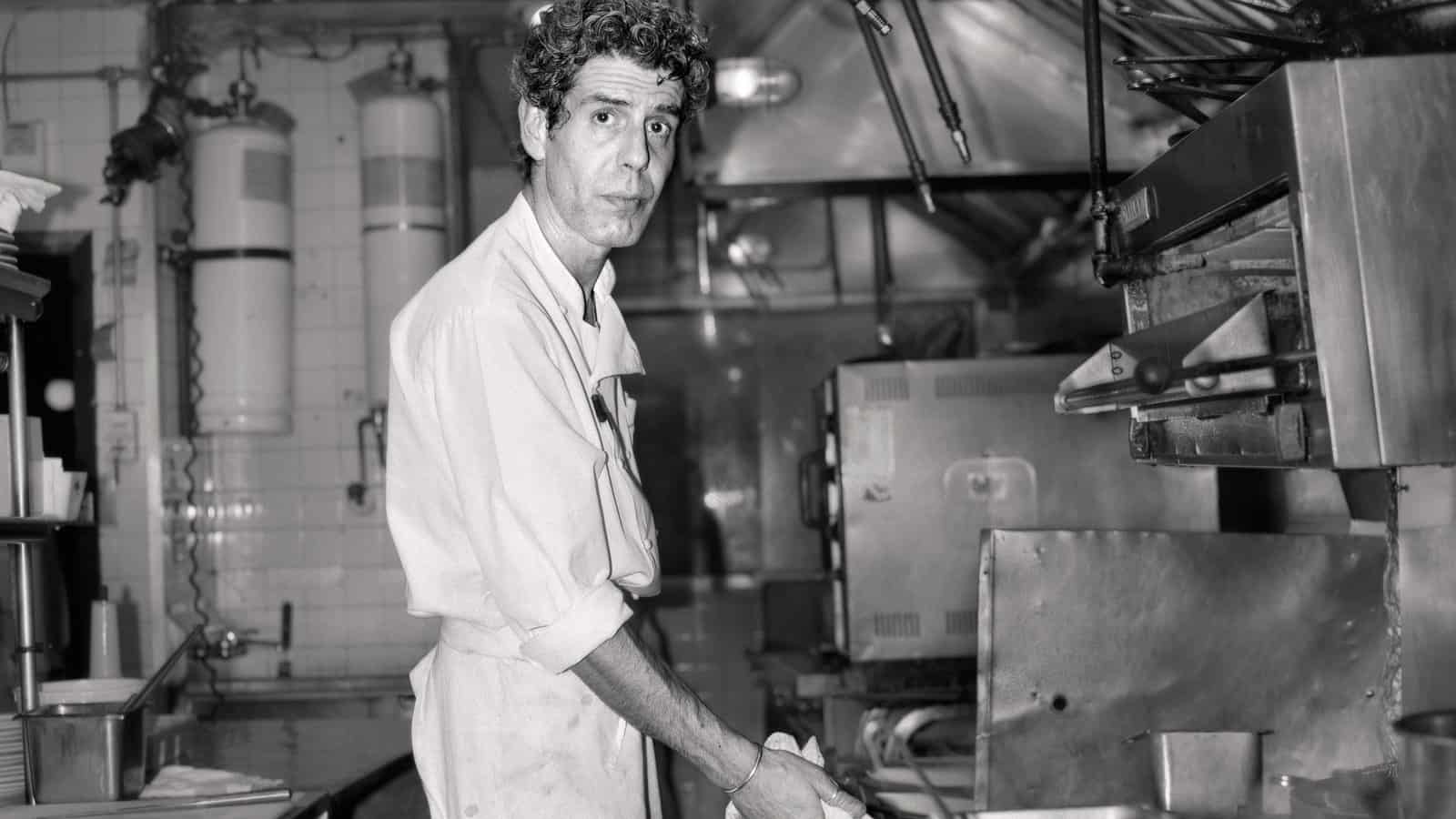

2) Steve Carell
3) Anthony Bourdain
Do you think people recognize that?
Oh yeah!
How do you find that humor within a shot?
I always find it far more challenging to take a picture that has an element of humor to it. I think it’s the most difficult picture to take. And my close-up portraits are so somber and so…
Neutral?
Yeah, neutral, very neutral. So subtle, maybe that’s why I ended up taking more pictures with a sense of humor to counter-balance the other work.
Are you a big fan of comedy in general?
Mmm, yeah, a fan is pushing it, ahahaha.
Hahahaha!
The pictures that make people laugh are really the hardest to take because it’s such a fine line, you know, it’s like there are so many stand-up comics, and there are so few successful ones. Such a fine line, to find the right tone, to find the right expression for the right idea for the right person. All these things have to come together. It’s not, you just have a funny idea and it makes sense for anybody. It has to be the right idea for this person, so and those are actually the hardest things in my life, to come up with these ideas…pulling them off and producing them and even trying to talk people into it. Everything is easier than to come up with the right idea.
Where do you find inspiration for those ideas?
It depends. Everywhere, mostly doing research. Once I get an assignment, I start thinking about that person, what makes sense for them. I read interviews they’ve given, I look at their pictures, see what their hobbies are. Try to get an idea of what their mindset is, what they’re interested in, it also then helps me to talk to them. And then a combination of what kind of work they’ve done in the past. What would make the most sense for them.
P. Diddy, for example. The idea came about because I saw this humongous building size poster for his vodka. And the whole ad is just a big picture of him, I think there was a little bit of a bottle on the bottom. But it was just him, and I thought, “Oh my god, this guy is so full of himself, it’s unbelievable.” I hate being photographed myself. I’m more shy, and all he does is put this big picture up there. What an egomaniac; he’s really in love with himself. And then that evolved into, “Oh he should be painting himself.” And then I thought, “oh yeah people paint naked women, so how about he’s got a naked women, but he’s still painting himself.” You know, so, and then obviously the setting has to be grand. And he didn’t even question it. He probably just thought, “Oh beautiful hotel room, beautiful girls, I’m an artist, great.” So I got lucky on that one. Other times they’re like, “oh no, way in hell am I going to do this.” That’s the sad part. But when it works out, it’s very gratifying.
Do you save some of those ideas for later on?
Sometimes, yeah. Sometimes those ideas could work for other people as well. The best ideas are when they’re not totally embracing it, and they’re a little skeptical. And it’s a perfect expression too, when they almost look like a victim that was talked into something like that. Those make for the funniest photos.
Is it because of a kind of tension?
Yeah, I think so. If somebody embraces the idea, and if they look at me…and it’s not funny, you know, they’re like…..and I always say it has to be a funny situation that is based in reality, not completely unrealistic, and the person has to counteract that moment with an expression that makes them look completely unaware of what’s going on. You know instead of laughing and smiling or screaming, it would be doubling up the idea…
It’s that balance; it would be unbalanced.
Mmmhm.
Yeah. When did you discover how important communication was?
Oh that became clear to me a long time ago, that unless you engage your subjects, you just get one picture or two pictures. Unless they’re actors, and they are acting for you. Yeah, you have to make people laugh or engage them to get any kind of facial expression.
Was that always easy for you, or was that something you had to work at?
No, I think it was something that I naturally have, I think that it’s something you need as a portrait photographer. But, if you don’t have it then maybe a different kind of photography is better. I will say that if you like hiking, solitude, don’t be around people, don’t become a portrait photographer, do landscape photography! Or travel photography.
Are there photographers now that you are a big fan of?
I get asked that all the time. I go back to photographers that are dead already or almost dead…it’s tough because you know nowadays photography…first of all the great magazine days are over. If you look at the work that Avedon and Irving Penn did for magazines, the people often times look terrible. They would photograph Marilyn Monroe, and she looks like a depressed train wreck in the famous picture by Avedon. Do you think Vanity Fair would publish that picture today? No. No. Everybody looks glamorous. Everybody looks great. So many things are being controlled by the publicists. Magazine pictures look more and more like advertising pictures, like you can hardly tell the different between an ad and a magazine picture nowadays, so that great outlet for photography, and also those great assignments have become less and less. Then in art, I feel kind of that photography…yeah it’s hard to come up with something new in photography. I haven’t really seen anything where I’m like, “Wow that’s groundbreaking, new, different, I’ve never seen that.” I see a lot of people repeating the Joel Sternfeld and the Joel Meyerowitz and the Stephen Shore kind of photography. They’re still trying to get away with that.
Hahaha, do you…
Philip-Lorca diCorcia is kind of exciting. But his work is also from the nineties, I believe. Yeah, so unfortunately, no, nothing that really excites me.
Do you try and keep up? Do you stay…
Kind of, kind of.

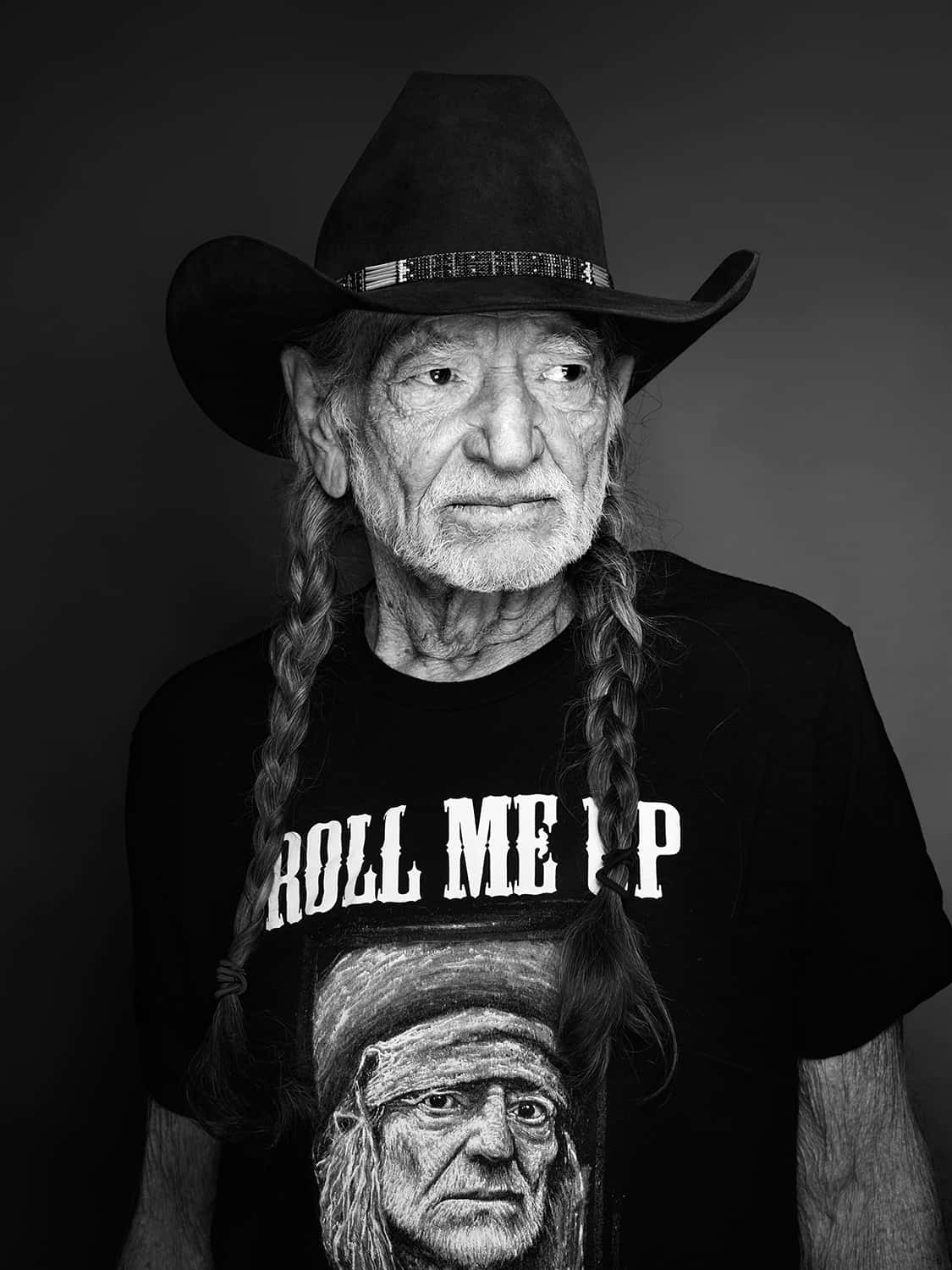




1) Willie Neslon
2) Lebron James
by Martin Schoeller
Do you still consume a lot of photography?
Well, I look at magazines a lot, they’re more and more boring, just to see what’s out there. I go to shows, I try to stay in touch, I try to go to biennials and things like that. But, yeah….it’s a little sad.
Are you friends with a lot of photographers?
Yeah, I’m friends with two guys that I used to work with at Annie Leibovitz’s, the other assistants. They are both photographers. I’m friends with Philip-Lorca diCorcia; I was good friends with Mary Ellen Mark, actually, um, yeah, a bunch of them. Jason Schmidt. Who else? Joel Sternfeld a little bit, his wife.
Do you find that when you’re not working that photography is still big part of your life? Or do you leave that at the office?
I leave that at the office. I bought this little camera, this Sony….this 42 megapixel…I thought great I’m going to take all these pictures of my son. Truth is, it’s always laying somewhere. I just always whip out the phone. You know, I’m a phone photographer.
Do you think that’s because…that because you’re profession is so squarely…
You know, because it’s work. You know photography, even though it can be fun at times, it’s still work. I have to focus and think about the light and think about the framing and exposure. Is this better, that better, and motivating people, composing pictures, and all of a sudden it’s work, you know, and, yeah. I don’t want to work all the time.
Once you turn that switch on, you can’t stop.
Yeah, because can’t turn your thinking process off. You can’t turn that off. It’s like having a chef make breakfast.
He can’t just make a regular breakfast.
He just make a regular omelet without spices. Now I’ve gotta think about “oh now I’ve gotta get this, this bacon looks old, looks like…this looks like that.” Next thing, he has to go shopping.
Ha! With the close-up portraits, do you think about them as a giant body of work? How it normalizes the people you’re photographing for this project. It kind of puts them on even footing with the celebrities you’ve photographed in the past.
Yeah, that was, it all started with my love for Bernd and Hilla Becher, those industrial site photographers. And from them I had this idea of building a catalogue. Photographing…my very earliest pictures were of all my friends. Nobody was allowed to wear makeup. Women had to pull their hair back. And then everybody was photographed exactly the same way with an 8×10 camera and this really flat lighting. I literally, as if they were water towers….I mean no facial expressions no, everybody just serious. I measured people’s eye height and brought the camera to the same level. And those pictures, unfortunately, never went anywhere. I showed them to magazines, and I got no jobs. I spent a fortune in the darkroom. I had just stopped working for Annie Leibovitz, and nobody gave me a job. They were so cold and so emotionless, that I don’t think anybody could translate them into magazine work. And then I mixed it up and I found this new lighting technique with Kino Flows that brought out the eyes and made the eyes shine.
I think it’s maybe it’s in the German nature, the archiving and collecting. You know, the Germans, all organized. So that’s how this came about. You know, when I…first the close-ups were a lot looser and had more expressions or different expressions and then I was more and more fascinated by literally the same expressions, trying to achieve a similar expression with each person, that is not just, like, serious, if you tell people to look serious it easily becomes a boring, detached picture. But, you know, trying to capture some humanity or small in-between moments when people are not just looking serious, because they’re mad or bored, but when their face hasn’t caught onto the next idea yet. I like to see people laugh, and then their next train of thought hasn’t manifested in the face.
How did you key into that? The first time, how did you realize that that was the moment that you wanted?
It’s kind of, it’s funny enough, if you take ten contact sheets or a hundred pictures and put them on the wall and tell someone to try and find the one picture that feels the most intimate, the most vulnerable, most people would pick, let’s say four or five pictures out of the hundred. Not everybody, but everybody who is in photography, or who has thought about photography before, but even people who haven’t thought about photography. Sometimes I can’t make up my mind between four pictures of the same person on the wall, and then I make an X on the back of one, or I make numbers on them, and everybody who works with me, I say, “you pick your favorite.” And uh out of about six people in the studio, I would say found come in on one picture. Sometimes it’s not the one I pick.
Was it looking at all those pictures that you began to see then…
Yeah, you look at the pictures and editing is a big process of…a big part of photography, you know, obviously.
Well thank you, this has been great!
Thank you!

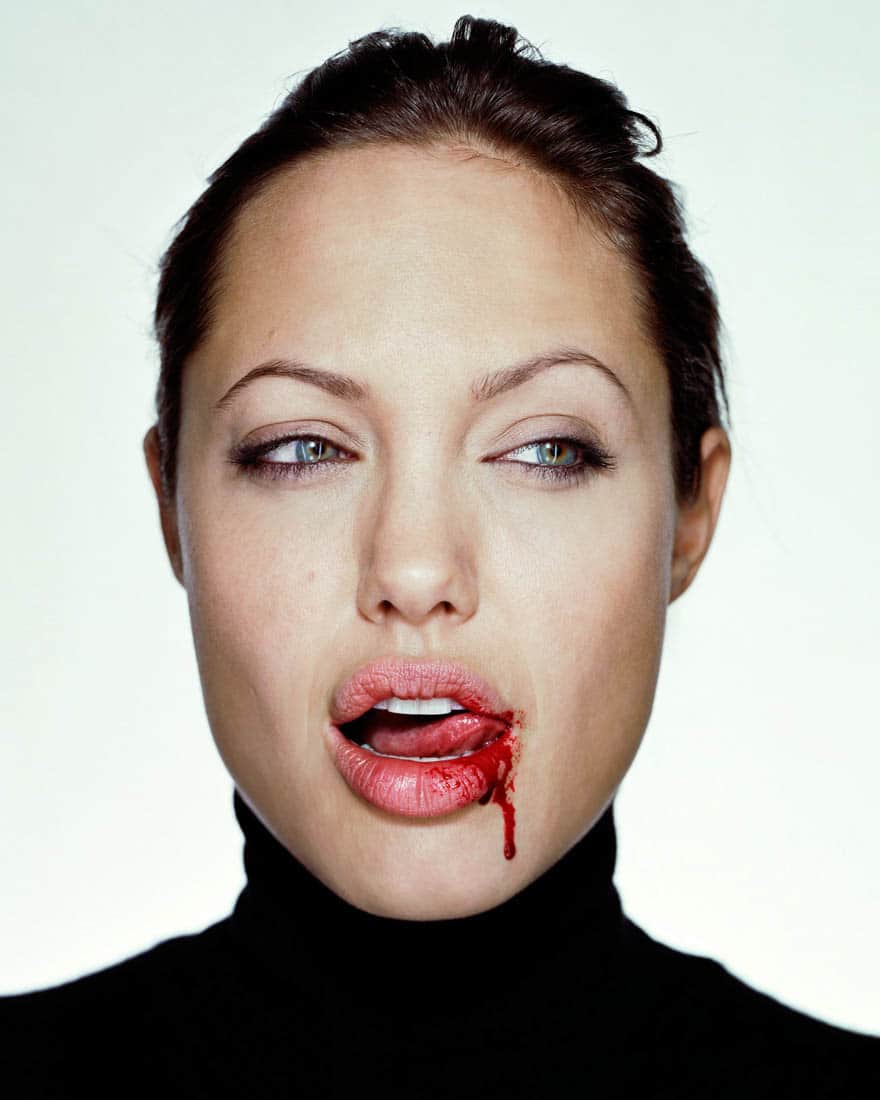


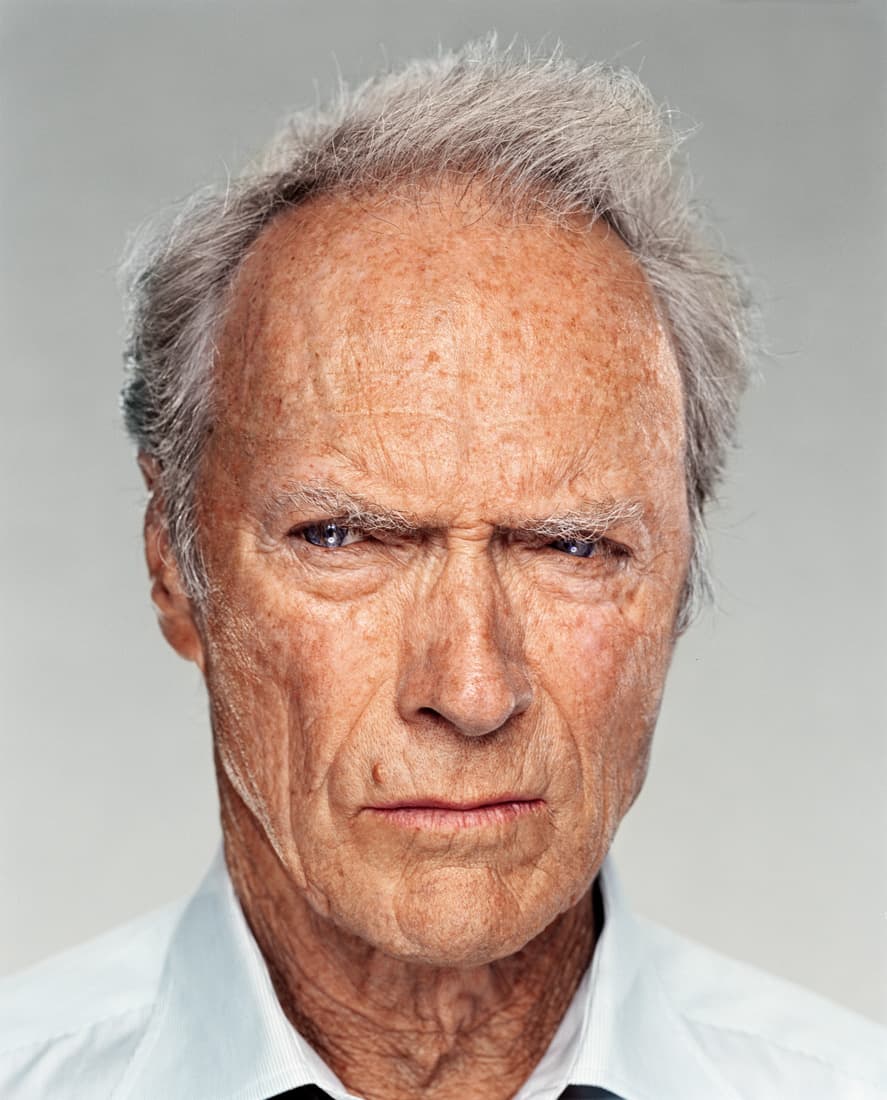

1) Angelina Jolie
2) Clint Eastwood
by Martin Schoeller